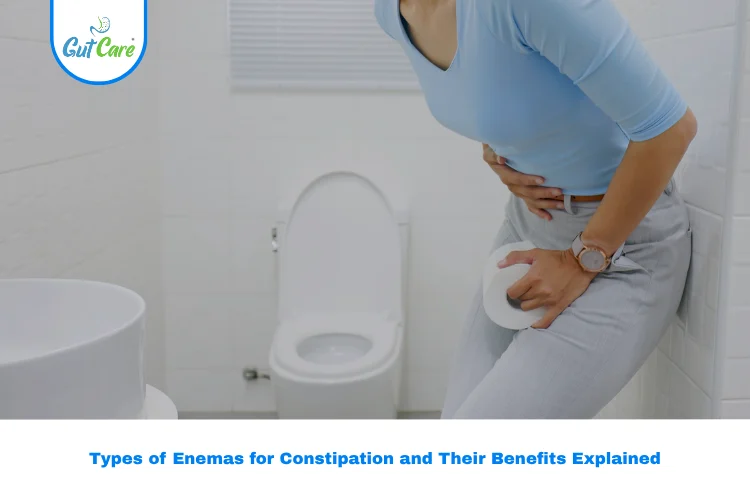Want to Say Goodbye to Quick Fixes Forever? Here Are Long-Term Constipation Relief Possibilities
Ongoing constipation could be far worse than just inconvenient, maybe so much that it can decrease your life quality. From regular bloating and straining to the nervousness due to the unplanned bowel movements, the affections are both physical and emotional. Yet, a lot of people tend to use over-the-counter remedies, dietary ins and outs, and fiber supplements that often give back only the temporary constipation relief they are looking for.
However, minimal invasive operations for constipation relief are the best solution in this case. Those kinds of treatments are the newest step in finding the original reasons for constipation. They are now available and give the patients practically the same answers without staying in the hospital, having no discomfort or fewer serious issues when compared to the traditional surgeries. Besides this article, we are going to pick up the most effective procedures, the working mechanism, the one who should receive the treatments and the potential effects on persons’ everyday life.
What Are Minimally Invasive Procedures for Constipation in Fact?
Minimally invasive procedures are those which make small cuts or none at all when operating. As a substitute, they merely employ small tools, cameras, and occasionally the natural body openings to intervene and improve patients. Minimally invasive procedures for constipation, however, are the ones that are used to deal with functions of the neural system, the muscular part, and the maintenance of the coordination of the rectum and the colon belt. In this context, discussions on the tumor are insensitive and aside from the problem. Besides, the author does not tackle the topic of data for the tumor. The respondent could have handled the stimulation in the tumor context.
Unbotchy Main Facts:
- Openings that are as tiny as possible and not at all
- Short hospital stays or even not needing them
- Less time for recuperation to convalesce
- Reduced level of the possible problem
These methods are a go-to for a patient who needs something in between the lifestyle options and the operations that will surely bring many improvements to the patient.
Top Minimally Invasive Treatments for Constipation Relief
1. Biofeedback Therapy: Train Your Muscles to Work With You
Biofeedback therapy is a non-surgical technique that uses sensors to track the functioning of your pelvic floor muscles during bowel movement. Visual or auditory cues provided in real-time act as a channel for instructing the muscles of the pelvic floor to become more well-organized. It is especially beneficial for patients with dyssynergic defecation.
Ideal for: Patients who have pelvic floor disorder or who have lost the ability to synchronize the function of their muscles during bowel movement.
How it’s done: You will be sitting or lying down while sensors are being set around your rectum. While receiving feedback, you will be doing various muscle contractions and relaxation techniques as you will be guided.
Duration: It usually needs 4-6 sessions in a few weeks.
2. Botulinum Toxin (Botox) Injections: Relax and Let Go
It is not just the facial wrinkles that Botox treats. In the situation of the anal sphincter being very constricted, the use of tiny botox injections has a relaxing effect on the muscle, and this helps the stool to pass more easily.
Ideal for: Patients who have the symptoms of tightness in the anal sphincter muscle or who have that condition for a long time.
Procedure details: It can be done at your doctor’s office or at an outpatient facility. Almost no downtime, and in general, the effects last for 3-6 months and sometimes longer.
3. Sacral Nerve Stimulation (SNS): Stimulate Smarter Bowel Movements
SNS is about implanting an electrically powered instrument close to the sacral nerves to regulate bowel activity in a better way. This device is used to deliver electrical impulses which in turn modulate the signals carried by the nerves and so the bowel is maintained for the proper easy movement of the stool.
Ideal for: Patients with the lack of nerve-related signals for the bowel the user has tried all other means of ejecting waste and still the problem persists.
What is to be expected: A trial device is initially implanted as a pilot to confirm responsiveness. In case of success, a permanent implant comes into the picture.
4. Fecal Microbiota Transplant (FMT): Balance Your Gut Ecosystem
FMT was always the standard treatment for CDI, but as the chronic constipation associated with gut flora imbalances is now in the limelight, it could be used as one approach. It entails infusing clean stool from a donor into your colon to restore the normal microbiome.
Ideal for: People whose gut microbiota are disrupted and who have a sluggish transit of the colon.
How the procedure is executed: Via colonoscopy, enema, or capsules. It is still a trial for constipation, but the findings are positive.
5. Rectal Balloon Expulsion and Dilation: A Simple Yet Effective Solution
This method is used for diagnostics and therapeutics and it not only helps with diagnosis but also with training the rectal muscles that are the ones that evacuate the stool. An obstruction elsewhere can identify and re-teach the defecation procedure.
Ideal for: The anismus or the outlet obstruction patients.
Benefits: It might be easier to determine the source of a mechanical or muscular problem and also to learn how to defecate again.
Are You a Candidate for Minimally Invasive Constipation Relief?
Such procedures are not usually the front-line therapy. Still, they are suitable only if the patients:
- Have been having chronic constipation for several months
- Have tried the change in diet, laxatives, and drugs with no success
- Have symptoms that point to muscle coordination or nerve function problems
- Want a long-lasting solution without the complications of conventional surgery
Benefits That Extend to More Than Just the Bathroom
Quicker Healing, Improved Results
- Free time: Around 85% of the procedures are usually performed on an outpatient basis.
- Less complications: A lowered risk of infection and blood loss.
- Fast recovery: Return to your regular activities at the earliest.
- Good results which last: You can be completely cured of your difficulty by this approach
What to Expect: Before, During, and After the Procedure
Each of the procedures will require different preparation and recovery, but a general overview is provided here to give you an idea:
Before
- Consultation by a specialist
- The need to cease the use of certain drugs
- Easy bowel prep (in some cases only)
During
- Use of a local or very light sedation
- Being a short session (No more than an hour) and held in the outpatient clinic.
After
- You can do your usual activities within 1 to 2 days
- Be back for a 1-2 week reexamination
- Keep the track of the progress in, for example, bowel movement and other habits
Pros and Cons of the Procedure
Although minimally invasive, there are definitely some risks involved. Read on to find out what they are:
- Mild postoperative distress or bloating
- Lack of symptom relief if the real issue is untreated
- There may be a
FAQs About Minimally Invasive Procedures for Constipation Relief
1. Will I be awake during these procedures?
Most procedures will be conducted cautiously with sedation or local anesthesia; thus you will still be comfortable and pain-free.
2. Are results guaranteed?
Quite a number of patients get a lot of relief, but the effect of the results differs from person to person, says the doctor. A correct diagnosis is the most important thing. / Please, a proper diagnosis is key.
3. Is this a permanent solution?
Some procedures offer long-term or permanent results; others may need to be repeated over time.
4. What are the costs involved?
It’s an individual situation and a specific therapy, so the insurance coverage and the treatment itself are taken into account before the decision is made. Beyond that, always check your coverage and ask for a cost estimation.
5. How do I find a doctor who performs these treatments?
You may start by searching for gastroenterologists or colorectal surgeons who specialize in motility disorders or pelvic floor therapy.
Final Thoughts: It’s Time to Move Forward
The patience required in dealing with chronic constipation can even be tiring. The process of minimally invasive treatments for the constipation relief, when home remedies and drugs become ineffective, brings a glimmer of hope. These therapies actually resolve the issues and hence symptoms cease to exist without affecting the patient at all,where you retain comfort and confidence, in addition to quality of life.
Discuss with a professional in the area of the stomach and bowels about all the options available to you and proceed to the next step towards permanent constipation relief. A visit to a doctor could be the best thing to do on your journey to achieve good digestive health.




